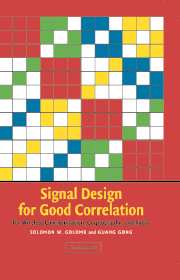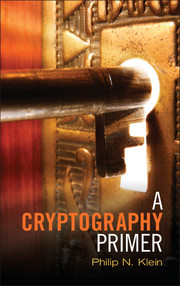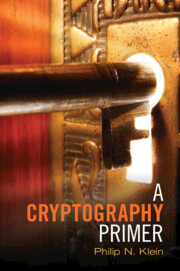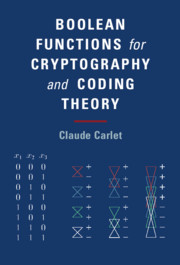Signal Design for Good Correlation
Wireless communications, advanced radar and sonar systems, and security systems for Internet transactions are contemporary examples of systems that employ digital signals to transmit information. This volume affords comprehensive, up-to-date treatment of the methodologies and application areas throughout the range of digital communication where individual signals, and sets of signals, with favorable correlation properties play a central role. Some application areas covered include Code Division Multiple Access (CDMA) signals such as those in use for cell-phone communication; digital systems for coded radar and sonar signals; and methods for secure authentication and stream cipher cryptology. The authors provide the necessary mathematical background to explain how the signals are generated and to show how the signals satisfy the appropriate correlation constraints.
- Golomb is a senior figure in coding theory; he wrote a seminal textbook on shift register sequences in 1967 that is still used
- The first comprehensive treatment of all the known methods to obtain balanced binary sequences with two-valued autocorrelation, many of them only recently discovered
- Provides a unifying theme for a wide variety of communications applications including CDMA telephony, coded radar, and stream cipher generation
Reviews & endorsements
"This comprehensive book is intendedfor use as a reference work for engineers and computer scientists as well as to serve as a textbook for courses in this important area of digital communications. This is the first accessible text covering a number of new results on some of the topics."
Andrei Kelarev, Mathematical Reviews
Product details
July 2005Hardback
9780521821049
458 pages
229 × 152 × 30 mm
0.84kg
Available
Table of Contents
- 1. General properties of correlation
- 2. Applications of correlation to the communication of information
- 3. Finite fields
- 4. Feedback shift register sequences
- 5. Randomness measurements and m-sequences
- 6. Transforms of sequences and functions
- 7. Cyclic difference sets and binary sequences with two-level correlation
- 8. Cyclic Hadamard sequences, part 1
- 9. Cyclic Hadamard sequences, part 2
- 10. Signal sets with low cross-correlation
- 11. Correlation of Boolean functions
- 12. Applications to radar, sonar, and synchronization.






